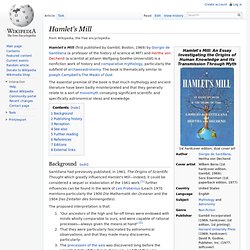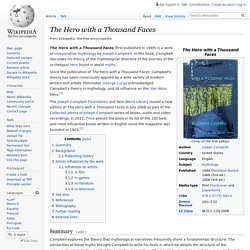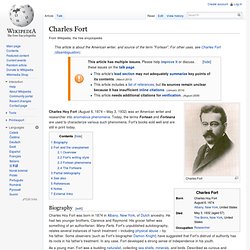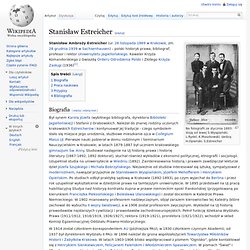

Buying Choices: The Power of Projections: How Maps Reflect Global Politics and History. Preview of Marshall McLuhan : cosmic media. Cryptoscatology: Conspiracy Theory as Art Form: Robert Guffey: 9781936296408: Amazon.com: Books. Bowie’s top 100 books - the complete list. It’s likely that most people reading this will have already seen either the original story on openbookstoronto.com last week, or a version of it referring back to that original list of “DAVID BOWIE'S TOP 100 BOOKS”.

There have also been numerous suggestions of a Bowie Book Club to tackle each of the 100 volumes. However, there was a problem with that particular openbookstoronto.com feature in that only 75% of the books were actually listed! For anybody planning on completing this epic voyage of discovery, we’ve listed every single one of the 100 books here (in no particular order) for your reference. You may have also noticed the two chaps in the middle of our montage. Well, it’s none other than David Bowie sporting a Clockwork Orange T-shirt (the book by Anthony Burgess is in the list) with his old chum, George Underwood. And so, on to that COMPLETE list of David Bowie’s Top 100 (count 'em) Books. The Virtual Marshall McLuhan: 9780773521193: Media Studies Books @ Amazon.com. Imaginary Futures: From Thinking Machines to the Global Village: Richard Barbrook: 9780745326603: Amazon.com: Books. Slave Species of the Gods: The Secret History of the Anunnaki and Their Mission on Earth: Michael Tellinger: 9781591431510: Amazon.com: Books.
Customer Reviews: African Temples of the Anunnaki: The Lost Technologies of the Gold Mines of Enki. The Christian Future and the Fate of Earth (Ecology and Justice): Thomas Berry: 9781570759178: Amazon.com: Books. The Dream of the Earth: Thomas Berry: 9781578051359: Amazon.com: Books. A Celebration of the Unfolding of the Cosmos: Brian Swimme: 9780062508355: Amazon.com: Books. John Michell (writer) John Frederick Carden Michell (9 February 1933 – 24 April 2009)[1][2] was an English writer whose key sources of inspiration were Plato and Charles Fort.

His 1969 volume The View Over Atlantis has been described as probably the most influential book in the history of the hippy/underground movement and one that had far-reaching effects on the study of strange phenomena: it "put ley lines on the map, re-enchanted the British landscape and made Glastonbury the capital of the New Age. " [3] Biography His first book, The Flying Saucer Vision, was published in 1967.
At this time Michell took the view that "an imminent revelation of literally inconceivable scope" was at hand, and that the appearance of UFOs was linked to "the start of a new phase in our history".[8] In 1969 he published The View Over Atlantis, a book which explored Alfred Watkins's concept that an ancient system of ley lines linked together megaliths and monuments from the distant past. Books Metrology, numerology & cosmology. Hamlet's Mill. Hamlet's Mill (first published by Gambit, Boston, 1969) by Giorgio de Santillana (a professor of the history of science at MIT) and Hertha von Dechend (a scientist at Johann Wolfgang Goethe-Universität) is a nonfiction work of history and comparative mythology, particularly the subfield of archaeoastronomy.

The book is thematically similar to Joseph Campbell's The Masks of God. The essential premise of the book is that much mythology and ancient literature have been badly misinterpreted and that they generally relate to a sort of monomyth conveying significant scientific and specifically astronomical ideas and knowledge. Background[edit] From the Ashes of Angels: The Forbidden Legacy of a Fallen Race: Andrew Collins: 9781879181724: Amazon.com. Life beyond Earth : the intelligent earthling's guide to life in the universe: Gerald Feinberg, Robert Shapiro: 9780688036423: Amazon.com. The Responsive Chord: Tony Schwartz, Tony Schwartz: 9780385088954: Amazon.com. The Crying of Lot 49 (Perennial Fiction Library): Thomas Pynchon: 9780060913076: Amazon.com.
The Hero with a Thousand Faces. The Hero with a Thousand Faces (first published in 1949) is a work of comparative mythology by Joseph Campbell.

In this book, Campbell discusses his theory of the mythological structure of the journey of the archetypal hero found in world myths. Since the publication of The Hero with a Thousand Faces, Campbell's theory has been consciously applied by a wide variety of modern writers and artists. Filmmaker George Lucas acknowledged Campbell's theory in mythology, and its influence on the Star Wars films.[1] Summary[edit] Campbell explores the theory that mythological narratives frequently share a fundamental structure.
A hero ventures forth from the world of common day into a region of supernatural wonder: fabulous forces are there encountered and a decisive victory is won: the hero comes back from this mysterious adventure with the power to bestow boons on his fellow man.[3] In laying out the monomyth, Campbell describes a number of stages or steps along this journey. Background[edit] TechGnosis: Myth, Magic & Mysticism in the Age of Information (Five Star Paperback): Erik Davis: 9781852427726: Amazon.com. Coincidance : A Head Test: Robert Anton Wilson: 9781561840045: Amazon.com.
Delete: The Virtue of Forgetting in the Digital Age. Charles Fort. Charles Fort Charles Hoy Fort (August 6, 1874 – May 3, 1932) was an American writer and researcher into anomalous phenomena.

Today, the terms Fortean and Forteana are used to characterize various such phenomena. Fort's books sold well and are still in print today. Biography[edit] Charles Hoy Fort was born in 1874 in Albany, New York, of Dutch ancestry. Stanisław Estreicher. Na fotografii ze stycznia 1893: stoją od lewej S.Wyspiański, L.Rydel, K.Maszkowski; siedzą: H.Opieński, S.Estreicher Biografia[edytuj | edytuj kod] W 1914 został członkiem-korespondentem AU (późniejsza PAU), w 1930 członkiem czynnym Akademii; od 1937 był dyrektorem Wydziału II PAU.

W 1896 należał do grona współzałożycieli Towarzystwa Miłośników Historii i Zabytków Krakowa. W latach 1903-1906 blisko współpracował z pismem "Ognisko", gdzie kontaktował się z Henrykiem Sienkiewiczem, Felicjanem Faleńskim i Włodzimierzem Spasowiczem. W pismach "Świat" i "Czas" propagował twórców Młodej Polski (poza Przybyszewskim), zwłaszcza Wyspiańskiego. Został aresztowany w trakcie Sonderaktion Krakau; więziony w Krakowie, Wrocławiu i obozie koncentracyjnym Sachsenhausen, zmarł w obozie w wyniku mocznicy. Praca naukowa[edytuj | edytuj kod] W pracy naukowej zajmował się historią prawa niemieckiego i polskiego, historią doktryn politycznych i prawnych, a także bibliografią i edytorstwem. Przypisy. The Masks of God. Montségur and the Mystery of the Cathars. Cathedral of the Black Madonna. Internet Architecture and Innovation.